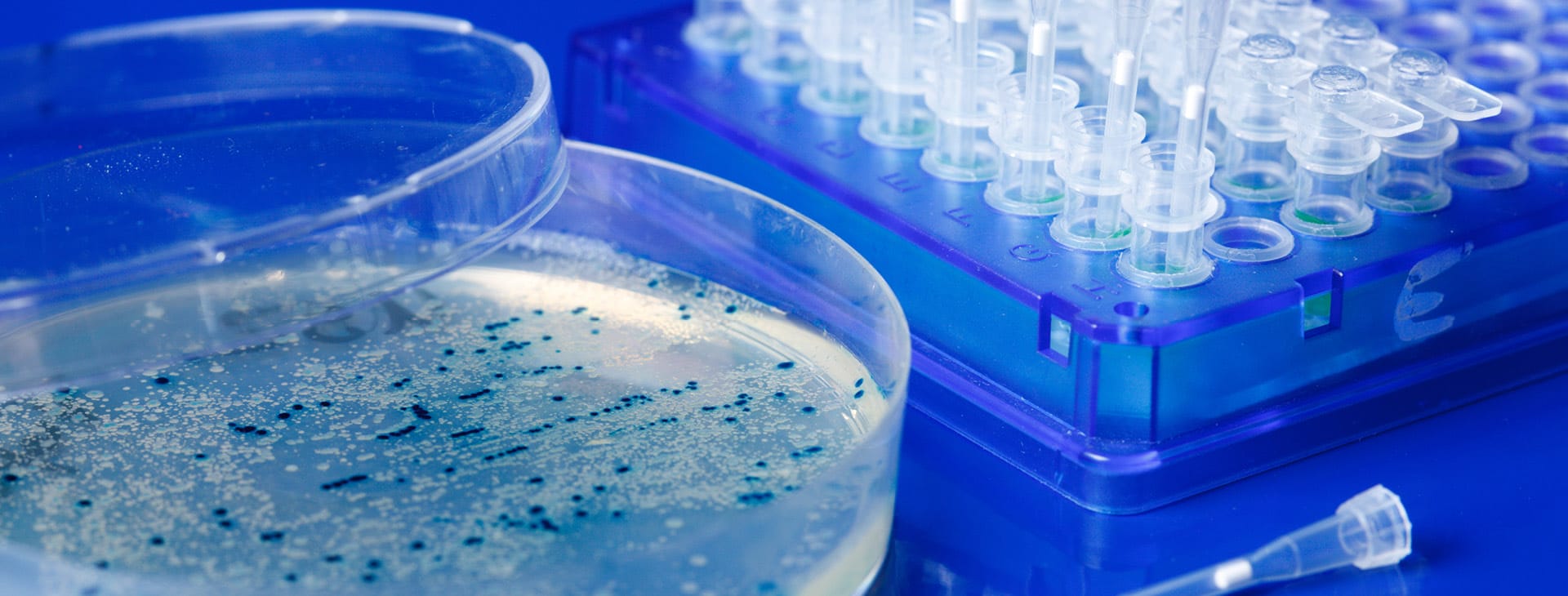What is clone-by-clone sequencing?
Image credit: Shutterstock

Clone-by-clone sequencing is a way of assembling a long fragment of DNA (such as a gene, a chromosome or even a whole genome) from shorter sequencing reads.
- Earlier sequencing techniques produce short fragments of DNA during the sequencing process.
- These need to be reassembled in the right order to understand the sequence of the full stretch of DNA – such as a gene or even a whole genome.
- There are two main strategies for this: clone-by-clone sequencing and shotgun sequencing. Both methods are used less frequently now that sequencing techniques can produce increasingly long sequences – although, in the 2020s, clone-by-clone sequencing is the less common technique.
What is clone-by-clone sequencing?
- Large genomes, like those of mammals, take longer to sequence because of their complexity.
- Using earlier sequencing methods, many small DNA fragments produced during the sequencing process have to be reassembled into the right order to understand the full sequence.
- There are two main methods of putting the sequences back together: clone-by-clone sequencing (this page) and shotgun sequencing.
- During clone-by-clone sequencing, a map of each chromosome of the genome is made before the DNA is split up into fragments. These chunks of DNA are inserted into Bacterial Artificial Chromosome (BAC) libraries and put inside bacterial cells to grow before sequencing. The bacteria are called clones – hence the name clone-by-clone sequencing.
- Clone-by-clone sequencing is a reliable technique that was used during the Human Genome Project. However, it is slow and tedious.
- More modern sequencing techniques can produce longer fragments of DNA – so it is not always necessary to reassemble the genome. Generally, when reassembly is necessary, clone-by-clone sequencing has been phased out in favour of shotgun sequencing.
How does clone-by-clone sequencing work?
- In clone-by-clone sequencing, a map of the genome is made before the DNA is sequenced.
- The genome is broken up into large chunks (around 150,000 bases long). The location of these chunks on the chromosomes is recorded (mapped) to help with assembling them in order after sequencing.
- The chunks are then inserted into Bacterial Artificial Chromosomes (BACs) and put inside bacterial cells to grow. The chunks of DNA are copied each time the bacteria divide to produce lots of identical copies.
- The DNA in the individual bacterial clones is then broken down into even smaller, overlapping fragments. Each fragment is 500 base pairs long so that they are a more manageable size for sequencing.
- These fragments are put into a vector (a circular DNA molecule) that has a known DNA sequence.
- The DNA fragments are then sequenced, starting with the known sequence of the vector, and extending out into the unknown sequence of the DNA.
- Following sequencing, the small fragments of DNA are pieced together by identifying areas of overlap to reform the large chunks that were originally inserted into the BACs.
- This ‘assembly’ is carried out by computers which spot areas of overlap and piece the DNA sequence together.
- Then, by following the map constructed at the beginning, the large chunks can be assembled back into the chromosomes as part of the complete genome sequence.
- The clone-by-clone approach was used during the 1980s and 1990s to sequence the genomes of the nematode worm, C elegans, and the yeast, S cerevisiae. It was also used during the Human Genome Project.
What are the advantages of clone-by-clone sequencing?
- Every fragment of DNA is taken from a known region of the genome, so it is relatively easy to determine where there are any gaps in the sequence.
- Assembly is more reliable because a genome map is followed, so the scientists know where the larger fragments are in relation to each other.
- As each fragment is distinct, many people can work on the genome at one time – as was done during the Human Genome Project.
What are the disadvantages of clone-by-clone sequencing?
- Making clones and generating genome maps takes a long time.
- Clone-by-clone sequencing is generally more expensive than shotgun sequencing.
- Some parts of the chromosomes, such as the centromeres, are difficult to clone. This is because they contain long repetitive sections which makes them difficult to cut and clone into BACs.